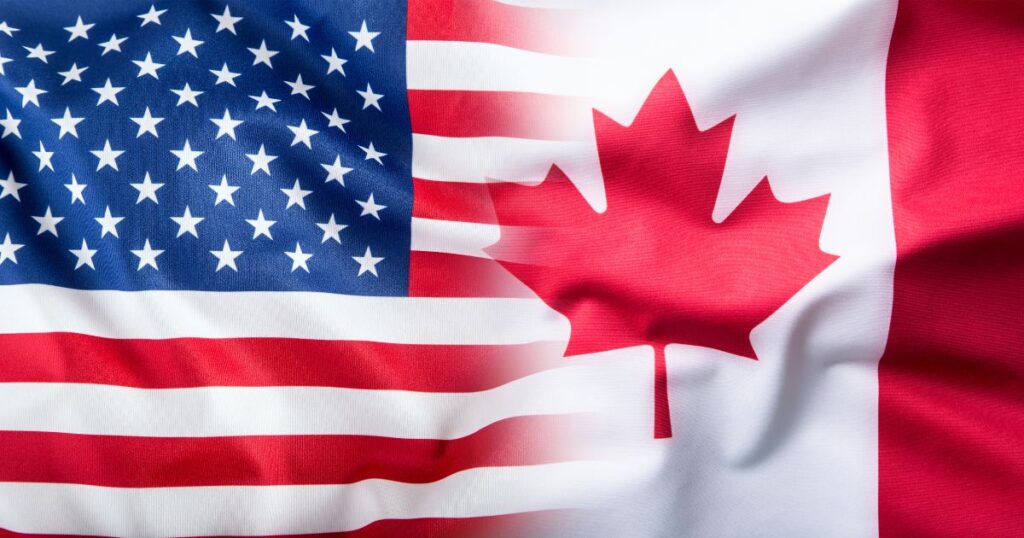This post was last updated March 27, 2023.
According to World Population Review, Canada is second only to Mexico as the most preferred destination by American expats.
Between Canadian friendliness and endless natural beauty, what’s not to love? For many Americans living in Canada, there’s an added bonus: proximity to the US.
Considering these factors, many Americans decide to make their relocations permanent. With this decision comes important financial planning implications to consider, such as how to navigate having and, eventually, making withdrawals from a US IRA while in Canada.
If you have an IRA account and plan to relocate to Canada, perhaps retire there, this article will help you understand how Canada will treat your retirement accounts.
What is an IRA?
IRA stands for Individual Retirement Account. The “individual” part is crucial because, unlike employer-dependent 401(k)s, IRAs are long-term saving accounts designed for individual workers, and they come with certain tax advantages.
Does Canada have an IRA?

Canada does not have an IRA. However, it has two retirement savings mechanisms that mirror an IRA.
Registered Retirement Savings Plans
Abbreviated as RRSP, this is the most common Canadian retirement plan. It is also one of the only foreign retirement vehicles that the IRS officially recognizes, which is a stroke of fortune for Americans living in Canada.
RRSP is similar to a traditional IRA in that savings are tax-deductible in both. However, an RRSP offers more generous annual contribution limits: generally 18% of last year’s income up to $29,210.
Tax-Free Savings Account
Abbreviated as TFSA, this plan mirrors a Roth IRA because savings are not tax-deductible, while earnings are tax-exempt.
Still, TFSAs, unlike Roth IRAs, are designed as savings vehicles and do not depend on income. For 2023, the limit is $6,500, an increase from $6,000.
Common types of IRAs held by US expats
There are four main IRA options American expats should choose from.
And the common types of IRAs American expats hold are traditional and Roth IRAs. The key difference is that with the former, tax obligations are postponed. So you benefit now but pay later.
With the latter, tax obligations come up front.
Can Americans living in Canada contribute to an IRA?

Compared to a 401(k), Americans living abroad can easily contribute to both Roth and traditional IRAs.
However, it’s important to note that contributing to an IRA while residing in Canada can trigger Canadian taxes. We’ll discuss that in more detail later.
Do Americans living in Canada have to declare their IRA on the Canadian tax return?
Whether Americans living in Canada have to declare their IRA on the Canadian tax return will depend on the type of IRA.
Traditional IRA in Canada
Canadian Revenue Authority (CRA) doesn’t tax income accrued from a traditional IRA. Consequently, a holder of a traditional IRA doesn’t have to declare it on their Canadian Tax return.
Roth IRA in Canada
If you file a one-time election to defer your taxes, the income you’ll earn from your Roth IRA will not be subjected to tax in Canada. As a result, you won’t have to declare a Roth IRA on your Canadian tax return.
But if you don’t file the election, you must declare your Roth IRA since any income from it will now be liable to Canadian taxes.
There are other considerations. For instance, any contribution you make to your Roth IRA while in Canada will instantly change the tax status of your Roth IRA. As a result, the income you’ll earn from your Roth IRA from when you make the contribution will be subject to Canadian taxes.
Are IRA withdrawals taxed by both Canada and the US?
This also depends on the type of IRA. While both Canada and Uncle Sam tax withdrawals from traditional IRAs, withdrawals from Roth IRAs aren’t taxed.
Remember, contributions to Roth IRAs do not come with any tax benefits. But most distributions from Roth IRAs don’t attract any tax. Were Roth withdrawals taxed, it would be a double loss.
Then again, if you made contributions to your Roth IRA as an established tax resident in Canada, the Canadian tax code exempts you from withdrawal taxes to the extent of the balance in the Roth IRA just before the first Canadian Contribution.
US-Canada Tax Treaty

In taxation matters, the presence of tax treaties carries significant implications.
Since Canada enjoys an excellent relationship with its neighbor to the south, the two countries have signed a few tax treaties. These include a bilateral income tax treaty, an estate tax treaty, and a FATCA Agreement.
The bilateral US-Canada Income Tax Treaty is particularly relevant for Americans who intend to retire across the 49th parallel because, among others:
- It excludes the application of the savings clause to pensions and annuities
- It excludes from Canadian tax pension income that would have been excluded from tax in the US
- It caps the tax on pension income liable for tax in the US at 15%
Does Canada have a Totalization Agreement with the US?
Yes. Canada has a Totalization Agreement with the United States.
There are several implications of the Totalization Agreement between Canada and the US. One is that American expats pay Social Security taxes to only one system.
Then again, the agreement makes it easier for American expats to qualify for Social Security benefits by letting them add their Social Security credits in both the US and Canada.
Using the Foreign Tax Credit to prevent double taxation on pension withdrawals
As an American expat, you’ll want to know about the Foreign Tax Credit (FTC) and how it works.
In brief, the Foreign Tax Credit is a tool that allows US expats to offset, on a dollar-for-dollar basis, the taxes paid to the Canadian Revenue Authority (CRA) against taxes owed to the IRS.
Suppose your Canadian pension income is $10,000, for which you pay $1,500 as tax to the CRA. You can subsequently reduce your US tax obligation by this $1,500.
Which one offsets US tax liability on pension withdrawals: the Foreign Tax Credit or the Foreign Earned Income Exclusion?
The answer here is the Foreign Tax Credit. The reason is that pension withdrawals are considered “passive” or “unearned” income, not earned income. Therefore, the Foreign Earned Income Exclusion cannot be used to reduce US tax liability on pension withdrawals made by US expats. As the Exclusion’s name suggests, it can only be applied to “earned” income, such as a salary.
Read more about the Foreign Earned Income Exclusion in our complete 2023 guide.
How does the US classify Canadian Pension Plans?

The IRS does not categorize Canadian pension plans as “qualified pension plans.” According to the tax code, a pension plan should be a “trust created or organized in the United States.”
However, thanks to the Canada-US tax treaties, Canadian pension plans are essentially treated as such.
Is it a good idea to contribute to both a US IRA and a Canadian Retirement Plan?
No. Contributing to a US IRA and a Canadian Retirement Plan will come with negative tax consequences. According to the terms of the US-Canada tax treaty, contributing to both a US IRA and a Canadian Retirement Plan will result in any income generated by a Roth IRA becoming taxable by the Canadian Revenue Authority.
Options for US Expats with IRAs

The following options are available for US expats with IRAs and are best discussed with an expert in US-Canadian cross-border tax and retirement planning.
- Cash-out the IRA before arriving
- Leave the IRA in the US
- Transfer the IRA to a Canadian RRSP
- Transfer the IRA in-kind to Canada
Connect with Bright!Tax today to learn about our full-suite service offers for US expats living in Canada
We are proud to have both US and Canadian tax expertise at Bright!Tax. Our team includes both American and Canadian CPAs and a cross-border financial planner who will work together to ensure you don’t have to coordinate with different firms, and that your global tax strategy is as efficient as possible for you. Get started today!

 Connect on LinkedIn
Connect on LinkedIn

